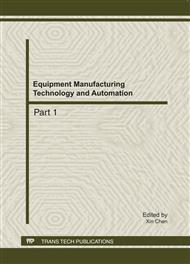p.655
p.661
p.667
p.672
p.681
p.685
p.690
p.694
p.698
Enhancement of a Fault Measure for AMSs Using Probabilistic Timed Automata
Abstract:
A novel approach for probabilistic timed structure that is based on combining the formalisms of timed automata and probabilistic automata representation of the system is proposed. Due to their real-valued clocks can measure the passage of time and transitions can be probabilistic such that it can be expressed as a discrete probability distribution on the set of target states. The usage of clock variables and the specification of state space are illustrated with real value time applications. The transitions between states are probabilistic by events which describe either the occurrence of faults or normal working conditions. Additionally, the passage of discrete time and transitions can be probabilistic by mean of the theory of expectation sets to obtain a unified measure reasoning strategy.
Info:
Periodical:
Pages:
681-684
Citation:
Online since:
August 2011
Authors:
Price:
Сopyright:
© 2011 Trans Tech Publications Ltd. All Rights Reserved
Share:
Citation:


